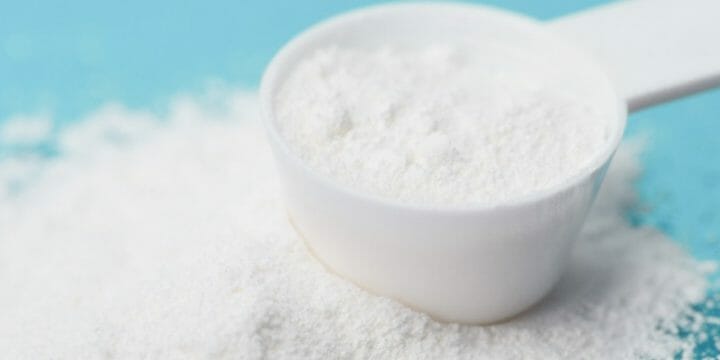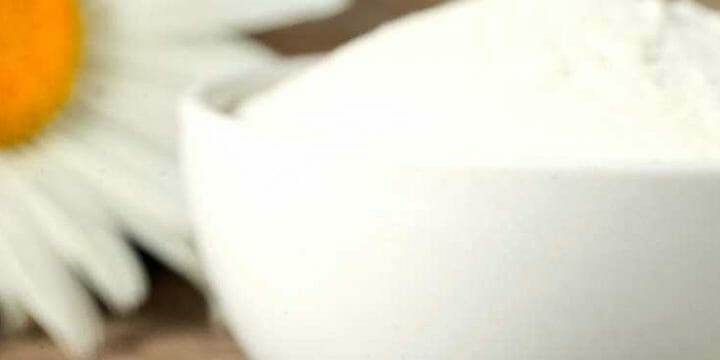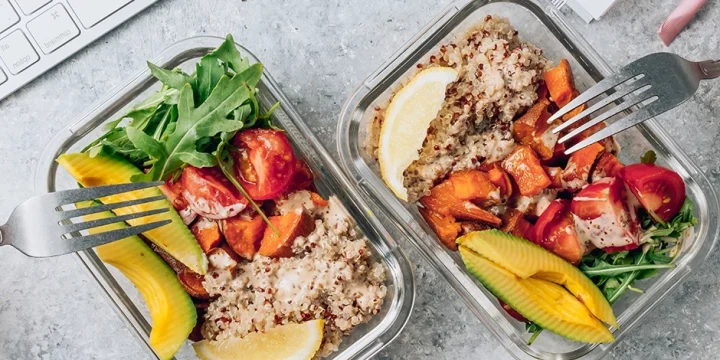Italian dressing is one of those products that seems vegan at first glance, but in reality, that's not always the case.
As a certified personal trainer, I took a closer look into homemade Italian dressing—one of the most versatile salad dressings—to answer this question that's been bugging many vegans.
Quick Summary
- Italian dressing can be vegan, but it depends on the specific ingredients used; homemade versions are typically vegan, while store-bought ones may contain non-vegan elements like honey, milk, or eggs.
- While basic Italian dressing recipes are vegan, containing ingredients like lemon juice, vegetable oil, and spices, store-bought versions often include non-vegan additives.
- According to the National Center for Biotechnology Information, vegan eggs used in some dressings have a high carbohydrate content of 41.89 g/100 g due to starchy ingredients.
- Personally, I find that making homemade Italian dressing is a safer and more satisfying option for vegans, as it allows full control over the ingredients used.
What is Italian Dressing Made Of?
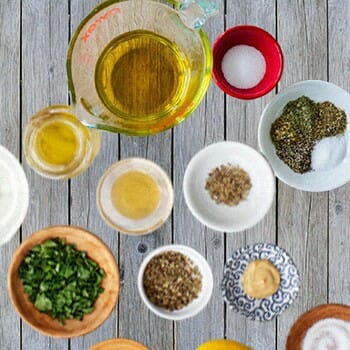
Italian dressing is made of lemon juice or vinegar, olive oil, salt, water, and sometimes apple cider vinegar for added tanginess.
All of these ingredients are vegan, which makes the basic recipe also vegan.
Some varieties may also contain sugar or corn syrup alongside the lemon juice, dried Italian spices and herbs, chopped bell peppers, and sometimes onion and garlic.
In addition to these ingredients, factory-made dressings, especially the creamy variety, can contain animal products and food stabilizers.
3 Problematic Ingredients
1. Milk & Eggs
From my experience with homemade vegan Italian dressing, I can assure you it's safe and dairy-free. However, when I shop for bottled options, I've learned to be cautious and always check labels for 'may contain trace amounts of milk/eggs.
According to one of the studies from the National Center for Biotechnology Information website, vegan eggs provide the highest calories, followed by whole eggs, yolks, and egg whites [1].
This is due to their high content of carbohydrates (41.89 g/100 g), in which starch content (66.73 g/100 g) is the main contributor due to starchy ingredients (in the form of starches and flours) used in vegan products.
2. Xanthan Gum
Another ingredient that may not sit well with others is xanthan gum, a food additive produced from fermented sugars. Some people might have a problem with this ingredient because a small percentage of those sugars come from animal products like whey.
According to another study from the National Center for Biotechnology Information website, food-grade auxiliaries, like xanthan gum or galactosidase, can significantly improve the solubility, emulsification, and stability of vegetable proteins [2].
3. Honey
If a salad dressing is advertised as plant-based, it shouldn't contain honey, commonly found in various condiments.
Does it Contain Dairy?
It might contain dairy, particularly in its creamy versions, which can include milk, buttermilk, yogurt, or lactose.
The usual animal products in salad dressings include:
- Milk
- Buttermilk
- Yogurt
- Lactose
The good news? Dairy is not the only way to make a creamy vegan Italian dressing. Plant-based alternatives can make it equally satisfying, such as cashews, vegan butter, or any plant-based milk.
Homemade vs. Store-Bought
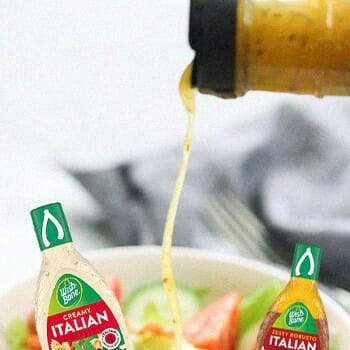
I've discovered that creating your own vegan Italian dressing at home is not only easy but also allows for creative freedom. My personal favorite involves a blend of extra-virgin olive oil, red wine vinegar, and a dash of my secret ingredient - fresh basil.
The total prep time usually involves only a couple of minutes, so you don't need proficient-level cooking skills. Besides, the internet is flooded with delicious vegan salad dressings so you won't be lacking inspiration.
If you're into creamy stuff, you can always rely on cashews to make a nice, thick Thousand Island-style vegan dressing.
You get to select the best ingredients, so you can skip on consuming low-quality vegetable oils and replace them with extra-virgin olive oil, for example.
To be more of help, we’ve contacted Whole Health Practitioner Paula Sturm RD, FMN, NLP.
As a Mayo Clinic trained dietitian and functional nutritionist, Paula suggests that the best way to make a vegan Italian dressing would include the following ingredients:
- 1/2 cup olive oil
- 3 TBS red wine vinegar
- 1 TBS Nutritional yeast
- 1/2 TBS Dijon mustard (acts as the emulsifier)
- 1 tsp maple syrup
- 1 finely chopped garlic clove
- 2 tsp of Italian seasoning
Simply put everything together in a mason jar, shake well, and you can refrigerate it up to one week.
Also, if you are extra-careful about eating healthy, you can even make oil-free, creamy Italian dressing in no time.
"If you just made a green salad chock full of vitamins and nutrients, why ruin it with a store-bought dressing that may quite possibly have refined sugars, poor-quality oils and, artificial flavors?"
- Gigi Gaggero, Culinary Education Expert & The Author of "Food Fight."
On the flip side, not everyone is cut out to be a chef, and that's totally fine because there are some excellent vegan dressings you can order online or pick up at your local supermarket.
To get inspired, check out our top picks of vegan salad dressing brands below.
4 Best Vegan Brands
In my journey to find the best vegan Italian dressing, I've tried numerous brands and can confidently recommend these top picks for those who prefer store-bought options:
- Daiya (Homestyle Ranch, Creamy Caesar, Creamy Italian) - All are gluten, soy, and egg-free, vegan, and contain no GMOs.
- Primal Kitchen Vegan Ranch - is based on avocado oil and is sugar, gluten, and soy-free. A great replacement for creamy Italian dressings.
- Anni Organic Goddess - a perfect balance of garlic, sesame seeds, parsley, and chives; all dipped in canola oil and apple cider vinegar.
- Garlic Expressions dressing If you are into garlicky flavors, you'll love this vinaigrette made with apple cider vinegar, canola oil, and fresh garlic cloves. It may not be creamy, but it's damn delicious.
Related Article: Best Vegan Popcorn Brands
Creamy, Oil-Free Vegan Salad Dressing Recipe

Extra-picky vegans or folks with dietary restrictions can always resort to homemade, oil-free versions of these creamy Italian dressing recipes and tweak the flavor to match anyone’s taste. This is the compromise necessary to ensure that their nutritional needs are met without compromising the taste.
Just blend the following ingredients:
- ½ cup raw, unsalted cashews
- ¾ cup water
- 1 ½ tbsp red wine vinegar
- 1 tsp onion powder
- 1 tbsp lemon juice
- 1 to 2 garlic cloves
- ¼ or 1 cup nutritional yeast
- 3 tbsp dried Italian herbs
- ½ tsp salt
- 1 tsp dijon mustard for a zesty flavor
You can make it zesty by adding Dijon mustard and garlic powder, or you can make it sweet by adding corn or maple syrup.
Is It Healthy?
Yes, it is healthy, especially the classic version, which is lower in calories and fat and provides vitamin K and healthy unsaturated fats.
"You won't get many nutrients from any salad dressing, but regular Italian dressing is a good source of vitamin K and healthy unsaturated fats that help prevent cardiovascular disease"
- Sandi Busch, livestrong.com
Too much oil or salt can undoubtedly contribute to some health issues, but you shouldn't be too worried if you find the right balance.
Also Read: Are Gushers Vegan & Gelatin-Free?
FAQs
What Is the History and Cultural Origin of Italian Dressing?
The history and cultural origin of Italian dressing is in the United States, where traditional Italian flavors inspired it, and it has since been adapted to include a variety of ingredients.
How Does the Nutritional Profile of Vegan Italian Dressing Compare to Traditional Italian Dressing?
The nutritional profile of vegan Italian dressing compares to traditional Italian dressing by generally having fewer calories and fat due to the exclusion of cheese and mayonnaise.
What Are Some Unique Vegan Substitutes for Traditional Ingredients in Italian Dressing?
Some unique vegan substitutes for traditional ingredients in Italian dressing include cashew cream or tahini for dairy and nutritional yeast for a cheesy flavor.
What Are Some Creative Ways to Pair Vegan Italian Dressing with Various Vegan Dishes?
Some creative ways to pair vegan Italian dressing with various vegan dishes include using it in salads, as a marinade for tofu or tempeh, and drizzling it over vegan pizza.
How Can the Environmental Impact of Ingredients in Vegan Italian Dressing Be Minimized?
The environmental impact of ingredients in vegan Italian dressing can be minimized by choosing organic olive oil, locally sourced herbs, and sustainably produced, fair-trade ingredients.
References:
- https://www.ncbi.nlm.nih.gov/pmc/articles/PMC8774821/
- https://www.ncbi.nlm.nih.gov/pmc/articles/PMC10670130/
About The Author
You May Also Like


